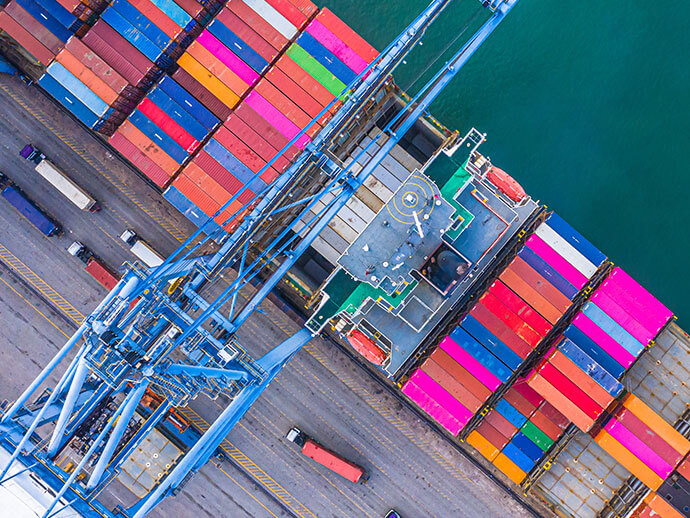Here’s our November 2022 Logistics Market Update.
Earlier this month, an issue of the Global Port Tracker shared that retailers are not feeling optimistic. The prediction is that this month’s containerized imports will drop 9.2% in comparison to November 2021. Further, December imports are expected to drop 9% year-over-year, and this downward trend will continue through March 2023 at least.
Click to Read the full article: https://www.joc.com/maritime-news/container-lines/us-retailers-lower-import-forecast-amid-demand-decline_20221108.html
China’s zero-COVID policy continues to put pressure on its economy—which has slipped for the third month in a row. A senior economist from Caixin Insight Group states that “manufacturing activity was still way down by COVID-19 outbreaks,” and added, “both output and new orders saw further declines.” COVID restrictions prompted 200,000 Foxconn workers across a Zhengzhou complex called iPhone city to flee to escape lockdowns.
Click to Read the full article: https://theloadstar.com/china-manufacturing-slips-for-third-month-in-a-row-as-zero-covid-policy-bites/
In air freight news, the industry remains optimistic in the face of falling air cargo rates. Some levels have dropped to below 2021 rates and continue to fall. The good news is, they aren’t at recessionary levels yet. The industry hopes that demand will return in March, but no one is holding their breath.
Click to Read the full article: https://theloadstar.com/airfreight-a-tough-few-months-but-demand-could-return-in-march/
The drop in consumer demand is being felt around the world. Asia-Pacific airlines have seen a drop of more than 10% year-on-year in demand in September. The director general of the Association of Asia Pacific Airlines (AAPA) says, “The outlook for the cargo market remains subdued in the near term. Overall, the region’s airlines continue to face a challenging operating environment, with costs under pressure as a result of high fuel prices and weak local currencies.”
Click to Read the full article: https://theloadstar.com/sudden-slump-in-demand-leaves-asia-pacific-air-cargo-carriers-in-limbo/
For those who work on the high seas, the Delivering on Seafarers’ Rights progress report was published, thanks to the Sustainable Shipping Initiative. A progress report was written based on an October 2021 Code of Conduct and self-assessment questionnaire. The purpose of the assessment was to look into the welfare and rights of seafarers to identify areas where improvement is necessary.
Click to Read the full article: https://safety4sea.com/new-report-marks-progress-regarding-seafarers-rights-and-welfare/




